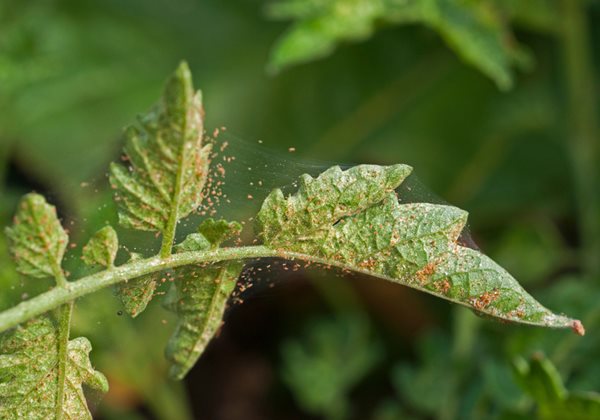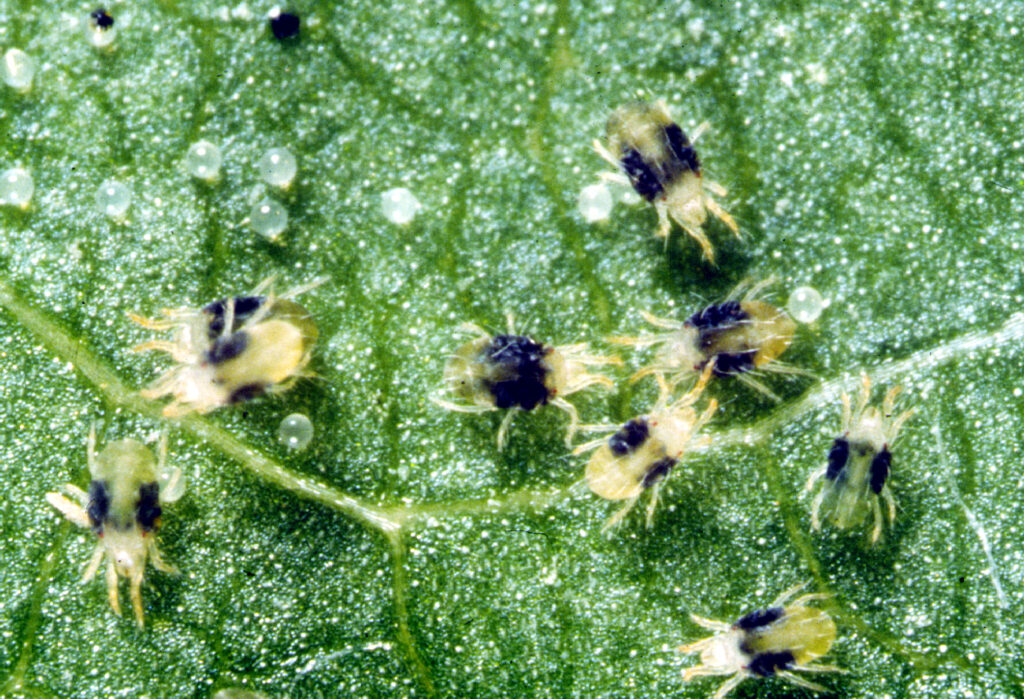Is your plant affected by spider mites? Are you wondering how to deal with these current spider mite infestations?
Do you want to learn how to be proactive and deal with these insects before they become a serious issue for your plants?
Then you are at the right place. Dive into the article below and find out how to identify and control spider mites.
What are spider mites?

The spider mites are the common, prolific, and damaging group of pests that can affect a wide variety of flora and fauna, including coniferous trees, fruit and other deciduous trees, vines, berries, vegetables, and ornamentals.
They are not insects that you think of. These are tiny, eight-legged creatures that belong to an entirely different class from insects.
They can produce fine webbing, like charlotte that just not only protects them but also helps these wingless creatures to disperse.
Life Cycle of spider mites
Most spider mite species can overwinter as eggs on the leaves and bark of their host plants. In early spring, when temperatures warm, these tiny six-legged larvae can start hatching and feed themselves for several days from the plant before seeking shelter where they can molt into the first nymphal stage.
Those Nymphs of the spider mites have eight legs and they can pass through two more molts before becoming a mature adult.
After mating, females of these insects can continuously produce more than 300 eggs over a couple of weeks. Hot, dry weather favors the rapid growth of these pests.
In such conditions, the time this insect takes to pass from egg to adult may occur in as less as 5 days. There are several overlapping generations seen in these insects per year.
How to identify spider mites?

The underside of the leaf which is affected by spider mites looks dusty, look closer. If you notice these dust particles are moving, it’s probably some type of spider mites!
These insects have an oval body which is covered with translucent or light-colored bristles, eight legs, and they have two small red eye spots on their heads. Adult females are a little bit larger than males.
In the immature stage before maturity, these insects look like the tinier versions of the adults, though for a short period the newly hatched larvae only have six legs.
The eggs of spider mites, often laid by them individually near the leaf veins that can be easily visible only under a microscope, look like minuscule water droplets. These eggs start spherical and clear and turn cream color before hatching.
Spider mites are especially abundant and found in a greater number during dry seasons and can typically colonize the under-surface of leaves. The Nymphs and adults of the spider mite feed by piercing and sucking the cell sap from the epidermis of the host leaves resulting in the removal of the chlorophyll, reducing photosynthetic activities & transpiration.
This results in yellowing & speckling of leaves, premature leaf fall, and stunting of growth. Infested flower petals also may lose their brightness which results in a direct loss to the grower. Heavy infestation can reduce the yield, fruit, and quality of marketable flowers.
Control measures of spider mites

Early detection of spider mites, before any kind of damage in the plant is noticed, is very important.
The tiny spider mites can be detected easily by taking a sheet of white paper or cardboard and striking some foliage of plants over it. The dislodged mites can be seen moving slowly on the paper.
If they are crushed in a striking motion with your finger, most of the plant-feeding mites may produce a green streak. If those spider mites streak yellow or orange, they are more likely to be beneficial predators.
If you are noticing 10 or more spider mites per sample, control is probably needed.
Option 1: Syringing.
As rainy weather may knock off spider mites, you can use a forceful jet of water from a hose which is termed syringing that can perform the same task.
Regular syringing to your plants may keep spider mites under control on a variety of ornamental plants in the landscape. This technique may also help to conserve natural predators.
Option 2: Quarantine and Inspection
The spider mite is often breeding on infested bedding and house plants. So while purchasing new plants, it is suggested to carefully inspect the lower leaf surface of your plant for any signs of mite activity.
So while buying new house plants, you should keep them quarantined from other plants until you are sure that no mites are present.
Option 3: Biological Control by predators
There are a lot of insects like lacewings and lady beetles who prey on spider mites. However, the most commonly sold predators to control spider mites are other types of mites.
You can purchase Predatory mites from the market and release them onto infested plants.
But make sure to check the list of those insects to determine which species is appropriate. There are several species that are host specific and each of those predator works better under different weather conditions. So choose wisely.
If predators are used, make sure to avoid applying pesticides otherwise it will kill them.
Option 4: Use Soft Pesticides
Most spider mites can be controlled by using insecticidal Or miticidal oils and soaps. The oils like horticultural oil and dormant oil can be used to treat these pests.
Horticultural oils should basically be used on perennial and woody ornamentals throughout the summer but make sure to avoid spraying flowers, otherwise, it can be damaged.
On the other hand, dormant oils are the same oil as horticultural oils, but they are primarily used to kill mite eggs and dormant adults during the fall and spring.
Insecticidal Or miticidal soaps are very useful during the warm season. But before using keep in mind that mites are very tiny and soaps and oils work by contact only. Thus, they need thorough coverage of the plant on the upper and lower leaf surface which is necessary for good control.
Option 5: Chemical Control by Miticides
Spider mites are not always killed by the usage of regular insecticides, so make sure to check the pesticide label to see whether the designation “miticide” is present or not.
If a miticide has been correctly used but the spider mite population has not been controlled within five to seven days, it is recommended not to use the same miticide! The spider mite population may be resistant to that particular miticide and thus you should select a miticide with a different mode of action.
Conclusion
As you read the article this far, you might know how to identify spider mites and the controlling measures to prevent them.
So the very next time try these preventive measures and get rid of these plant-damaging mites.
You may also like to read
How to get rid of Mealybugs on your plants – 5 best ways to eliminate mealybugs
5 Major diseases of a brinjal plant and their controlling measures






